Strolling the Latin Quarter: A Perfect Walk on the Left Bank
In the middle ages, walking the Latin Quarter would not have expended many calories. The Latin Quarter consisted of the area immediately surrounding the Sorbonne. La Sorbonne was a theology college created by Robert de Sorbonne in 1235. It is the oldest university in France, and even today, probably the most famous. Then it specialized in science and literature and only Latin was spoken, giving the area its name and adding to its reputation as the most historical area of Paris.
Arguments still abound regarding the exact boundaries of the Latin Quarter today. Now expanded to encompass some of the 6th arrondissement, it is generally accepted that the area emanating from the center where Boulevard Saint-Michel intersects with Boulevard Saint-Germain, going north to the Seine (including Quai Saint Bernard and Quai Montebello), south to the Luxembourg Gardens, from Odéon to Port Royal, can be claimed as the Latin Quarter. Much more of a respectable walk…
It was in 52 BC that the Romans conquered the Gauls and built the city of Lutetia. As the city expanded, roads and arenas were built. The present day Rue Saint Jacques was the main paved street (cardio maximus), leading from the Seine to the Forum at the top of Sainte Genevieve hill. (Other original streets, now modernized, include Blvd Saint-Michel, Rue Galand and Rue Mouffetard.) In the year 310, the name of the city was changed from Civitas Parisiorum to Paris.
The legendary Place Saint Michel, just a few paces from the Seine, is just as good a place to start our walk as any. With its baroque fountain featuring Saint Michel killing a demon, it has remained the favorite spot for student demonstrations, (seemingly every weekend!) It was a rallying place for the resistance during the Nazi occupation of France in WWII and the student protests of 1968.
To the left of Place Saint Michel, stumble up the narrow, cobbled streets of Rue de la Huchette, bustling with cheap restaurants, kebab shops and Turkish pastry establishments. This area, including Rue de la Harpe, is much maligned as too touristy and known, often condescendingly, as ‘Little Athens’, but for students and those on a budget, the vibrancy of these streets will always have their own, special charm. Indeed Rue de la Huchette boasts both the Theatre de la Huchette and the Caveau de la Huchette, formerly a 16th century wine cellar but since 1949, the go-to Jazz Club.
The narrowest street in Paris, the rue du Chat-qui-Pêche is only 1m80 (5’11) wide and runs for 29m (95’) adjacent to 14 Rue de la Huchette down to the Seine. The walls appear to lean in on themselves like a protective stone umbrella, the daylight at the Seine, a welcome sight.
At the end of Rue de la Huchette cross over Rue Saint Jacques onto Rue de la Bucherie, with the famed bookshop, Shakespeare and Company which not only faces the Seine but also has a great view of Notre Dame Cathedral. The Square René-Viviani next to Shakespeare and Company is a great place for taking your coffee, sandwich and book, if only to gaze at Notre Dame in a peaceful setting.
Other churches of interest, Saint Severin in rue Saint Severin and Saint Julien le Pauvre in the rue Galande, have their own fascinating histories and are well worth a visit if old churches are your thing.
Doubling back to Boulevard Saint Michel– either by the Seine or Rue de la Huchette– again make your way up the left hand side of the Boulevard. (A side detour on the right down rue Saint-André-des-Arts is definitely worthwhile, filled with Lebanese restaurants, bars, eclectic shops and a great little cinema. It’s a well used cut through to Rue de Buci and the heart of Saint-Germain-des-Prés. Again on the right side of the Boul‘Mich are several book shops with outside stalls selling cheap, second-hand books in English.)
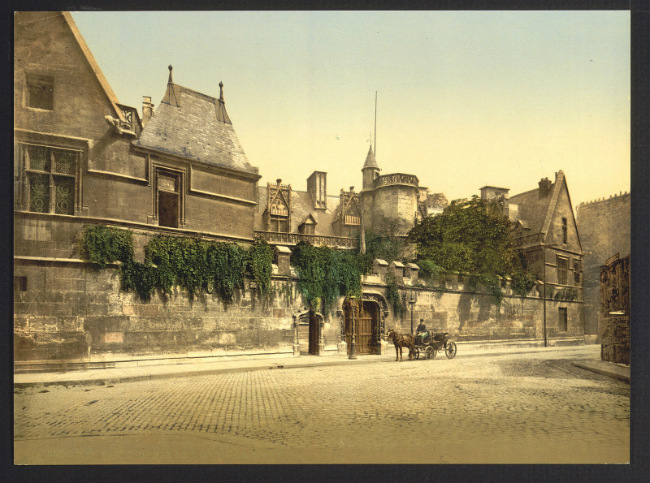
Cluny Museum, Paris, France. Between 1890-1900. Photochrom Print Collection. Library of Congress. Public Domain.
Continuing up the Boul‘Mich, cross over Boulevard Saint Germain and here at the intersection is the Musée de Cluny, a must for anyone interested in medieval architecture, artifacts, tapestries and jewelry. The Roman baths can be seen from the street and there is even a medieval garden where you can sit and take a break. The building was formerly begun by the Abbots of Cluny in 1334 and was rebuilt between 1485 and 1510. One if its most famous occupants was Mary Tudor. However it was in 1843 that an amateur collector, Alexandre Du Sommerard, moved into an apartment on the first floor of the Hôtel des abbés de Cluny. On his death, Du Sommerard’s collection of medieval artifacts was bought by the state as well as the building it was housed in. The Gallo-Roman thermal baths of Lutetia, dating from the late first century, have huge architectural significance. Over the last two centuries, numerous legacies and purchases, including the Lady and the Unicorn tapestry, amount to some 24,000 works on display covering the Roman Empire, early Middle Ages, the Romanesque era and the Gothic.
Past the Cluny Museum we come to the heart of the Latin Quarter and the Sorbonne University. At the top of Place de la Sorbonne, the building is well worth a closer look and if you are lucky the concierge might let you peep into the courtyard. (You can always stop at the Tabac de la Sorbonne for a quick coffee and croissant and enjoy the student ambiance.)
Just past the Sorbonne, up the Rue Soufflot, is perhaps my own, personal, favorite building: the Panthéon. Impossible to miss, it dominates the skyline and now that the exterior has been restored, is more arresting than ever.
A basilica was commissioned on the site in 507 AD by King Clovis to house the tomb of Clothilde his Queen and himself, but it was not until 1755 that the transformation of the simple basilica was put into the hands of the architect Soufflot under the instructions of Louis XV. The Panthéon was completed in 1790 and turned into a national building in 1791. Until almost the end of the 19th century, the Panthéon was used for Christian worship but in 1885, the building was given over to secular use at Victor Hugo’s funeral.
The Panthéon was built in the shape of a Greek cross with towering pillars supporting the breathtaking dome. Paintings by Puvis de Chavannes and Jean-Paul Laurent adorn the walls. It’s hard to know where to look first, but impossible to miss Foucault’s pendulum under the dome, which demonstrates the rotation of the earth. First installed in 1851, it is a masterpiece of engineering and science, and a thing of great beauty. (The original Foucault’s pendulum is now in the Musée des arts et métiers.)
The Panthéon now houses the remains of national heroes and great dignitaries in the crypt, including rather gruesomely, the heart of Léon Gambetta. The remains of other famous people, such as Alexandre Dumas, were transferred from their original resting place to join the likes of Voltaire and Rousseau and Jean Moulin the resistance leader. (Black and white footage of a state funeral runs constantly in a side room, demonstrating the solemnity and importance of these events and the crowds that lined up the Rue Soufflot on both sides to pay their respects.)
Before moving on to the right side of the Panthéon and the Rue Clothilde in front of the Lycée Henry IV, it would be a scandal not to continue a little further up Boulevard Saint Michel to the Luxembourg Gardens. These acres of beautiful gardens– comprising walkways, boating pond, tennis courts, donkey rides and the gorgeous, intimate, Musée du Luxembourg– deserve a morning or an afternoon for themselves, so you have been warned: stop off at your peril; you may never leave.
Back at the Panthéon, bear right at the end of Rue Clothilde onto the Rue de L’Estrapade, a lovely open street with inviting little bistros. The Rue de L’Estrapade runs gently down into the much written about Place de la Contrescarpe. As with this entire walk, there is a choice of which little street intrigues you the most; going off at a tangent and simply following your nose is to be recommended at all times, there will always be a little gem to satisfy and pique your interest whichever direction you choose.
Off the Place de la Contrescarpe, a lively square filled with cafés, the Rue Cardinale Lemoine, Hemingway’s first home in Paris, runs steeply downhill. The Rue Lacépède runs into Rue Geoffroy Saint Hilaire, a more straightforward route to La Grande Mosquée and the Jardins des Plantes. But of course we are meandering and the famous Rue Mouffetard to the right– with its even more famous market– can not be missed. At the top of Rue Mouffetard, on the right is the narrow little street, the Rue Pot du Fer, where George Orwell lived while writing Down and Out in London and Paris. A hundred years ago, this area was one of the poorest in Paris with the buildings little more than slums and the Place de la Contrescarpe, a drunkard’s paradise. It’s now a bustling market with bread and cheese shops that Parisians (and tourists) queue for. Not to mention the small restaurants of every ethnic persuasion… Time for lunch?
And now I need to make a confession. From the bottom of Rue Mouffetard to La Grande Mosquée de Paris, I have never taken the same route twice. With no sat nav on my phone, my sense of direction has been known to abandon me and I have resorted to asking the way from any passer-by. As it is only a five minute walk anyway, lost or not, it isn’t really the end of the world, even if in my frustration it might seem like it… Anyway, here goes and please feel free to find an easier route!
Where the Mouffetard market ends take a left on to the Rue de l’Épée-de-Bois, then follow Rue Pestalozzi, cross Rue Monge (another great market street) to rue du Puits-de-l’Ermite, past Square Robert Montagne and right on Rue Quatrefages to finally reach La Grande Mosquée de Paris. (Honestly it’s worth it!)
The mosque, one of the largest in France, was began in 1922 and finished in 1926. It was a token of gratitude to the 100,000 Muslims from the French Colonial Empire who lost their lives in the First World War. In the Second World War, when the Nazis occupied France, the Mosque harbored Algerian and European Jews. Now the Mosque contains not only prayer rooms but also a garden, library, gift shop, restaurant and café. To wander around the Mosque costs only a few euros; the Arabic tiling alone is worth it, the walled courtyard with water features, a haven of peace. However, the café is the cherry on the cake. Sit outside with a mint tea and Turkish pastry and try and fight off the sparrows, or inside and imagine you are in Morocco– the indefatigable sparrows will still follow you indoors and probably get to your pastry before you do…
Refreshed, the Jardin des Plantes is a lot easier to find. Just cross the road (the Rue Geoffroy Saint Hilaire)…
The 28 acres of the Jardin des Plantes make it the main botanical garden in France. Its origins were the Royal Garden of Medicinal Plants way back in the 17th century. Since 1993, the gardens, buildings, libraries, greenhouses and zoo have been classified as Historic Monuments.
As suggested by its name, the Jardin des Plantes houses a botanical school training botanists. The other buildings compose of the grand Gallery of Evolution, the Gallery of Paleontology and Anatomy and the Gallery of Botany. The Alpine Garden, Mexican and Australian hothouses, and the Rose Garden contain thousands of plants. The stunning glass and steel hothouse was designed by Charles Rohault de Fleury in 1834. A walk through the gardens, especially in late spring, is highly recommended– the gardens a peaceful refuge for Parisians at weekends.

Jardin des Plantes. Photo: Paris Tourist Office/ Amelie Dupont
At the end of the gardens you are greeted by the ever welcome Seine and the Quai Saint Bernard, now a waterfront promenade. Follow the quay left, past the outdoor sculpture museum and if you are lucky on a summer evening, the dancers who turn the quay into a tango dance floor.
The Institut du Monde Arabe is impossible to miss. A monolith of a building, extreme in its modernity, sits where the Quai Saint Bernard ends. Established in 1980 and designed by the architect Jean Nouvel, its south façade reinterprets traditional Arab architecture in a bold, uncompromising way. 30,000 light sensitive, metallic diaphragms were designed to regulate the penetration of light into the building; the entire facade glitters shockingly silver in the sun.
The institute contains 600 aspects of Arab Islamic art on three floors. These artifacts range from the pre-Muslim period to the Ottoman Empire to contemporary Arabic art and include ancient manuscripts, silk carpets, pottery, jewelry and astronomical instruments.
Staying on the banks of the Seine and now walking along the Quai de Tournelle, lined with beautiful old houses and the best view of the chevet of Notre Dame, you can note no 15, where La Tour d’Argent was established in 1582. The river is busy with all types of traffic: industrial barges, open topped tourist boats and river police, the quayside full of walkers, the banks replete with restaurants and always in front of you, Notre Dame, the most beautiful woman in the world.
Quai Montebello joins seamlessly from the Quai de Tournelle and stretches from Le Petit Pont to the pont de l’Archevêché and the end of our journey. The pretty Pont au Double, used only by pedestrians and cyclists, leads to Ile de la Cité, but stop for a moment halfway across for the perfect photo of Notre Dame.
Back on the Quai it isn’t far to return to our starting point at the bottom of Boulevard Saint Michel.
This is only one suggestion for a walk around the Latin Quarter, not attempting to uncover *all* the myriad little streets, mention all the wonderful, independent cinemas, or unearth all the history of the area.
I’ll leave all that to you. Bonne promenade!
Lead photo credit : Sorbonne, blue hour. Photo: Jan Remund/ Flickr

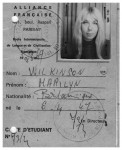
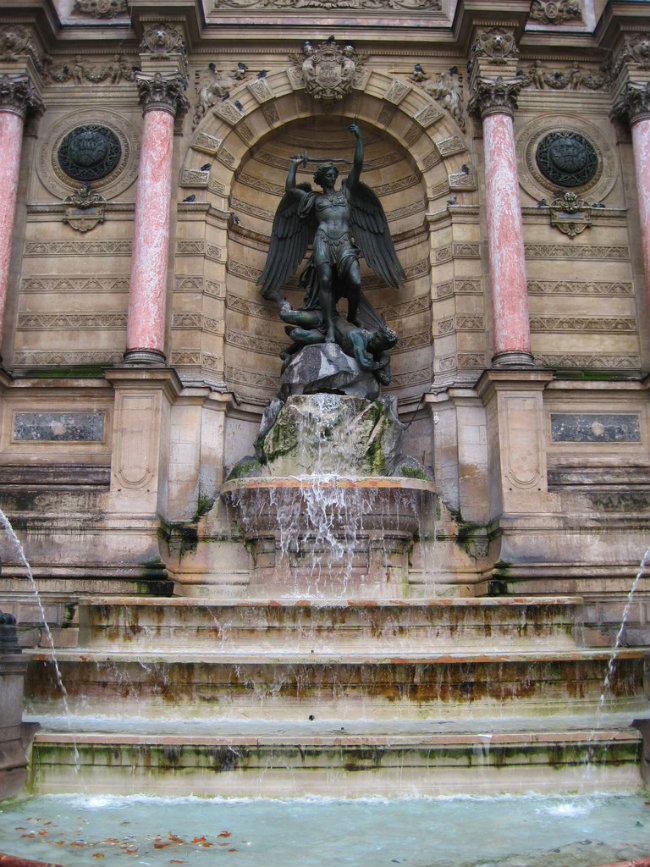
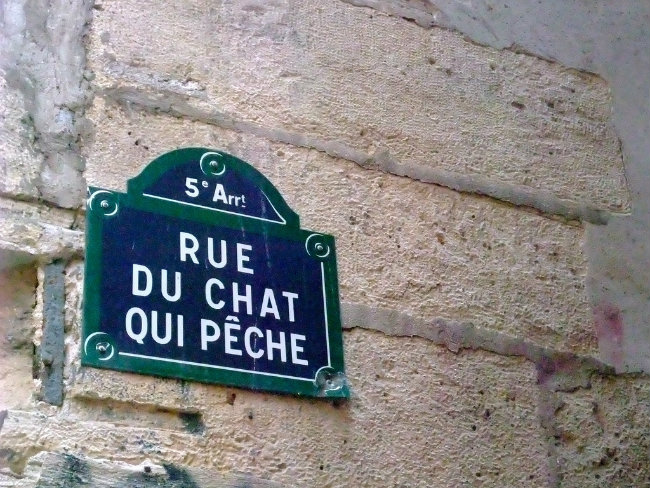
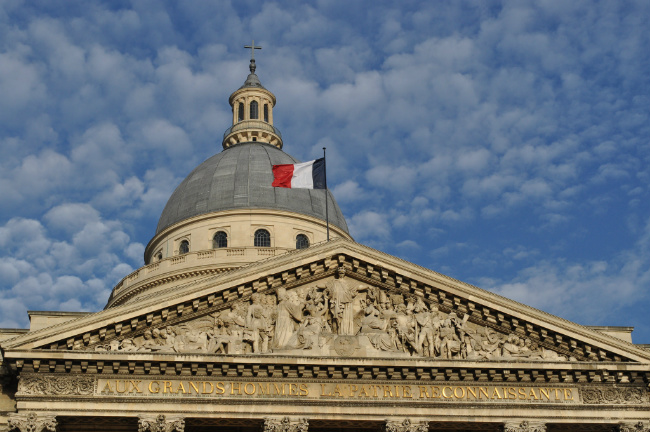
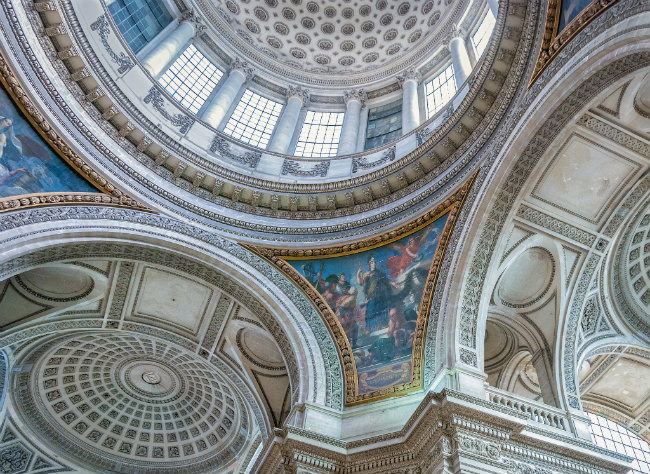
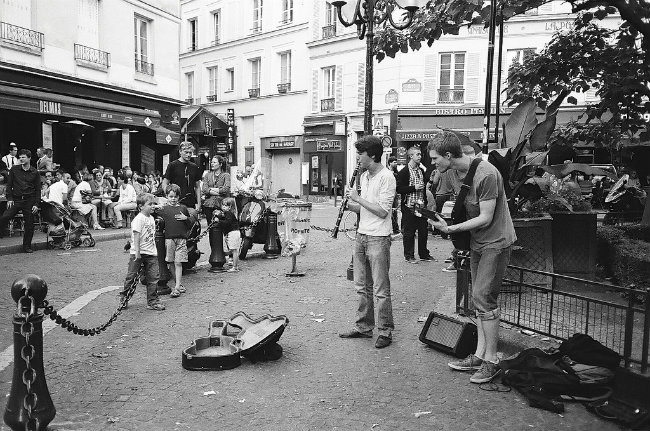
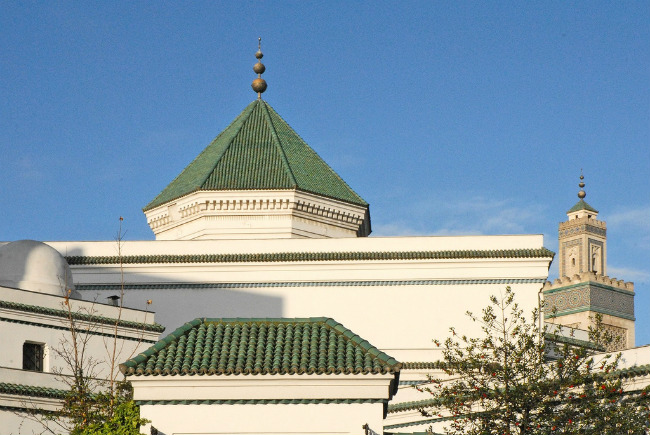



REPLY